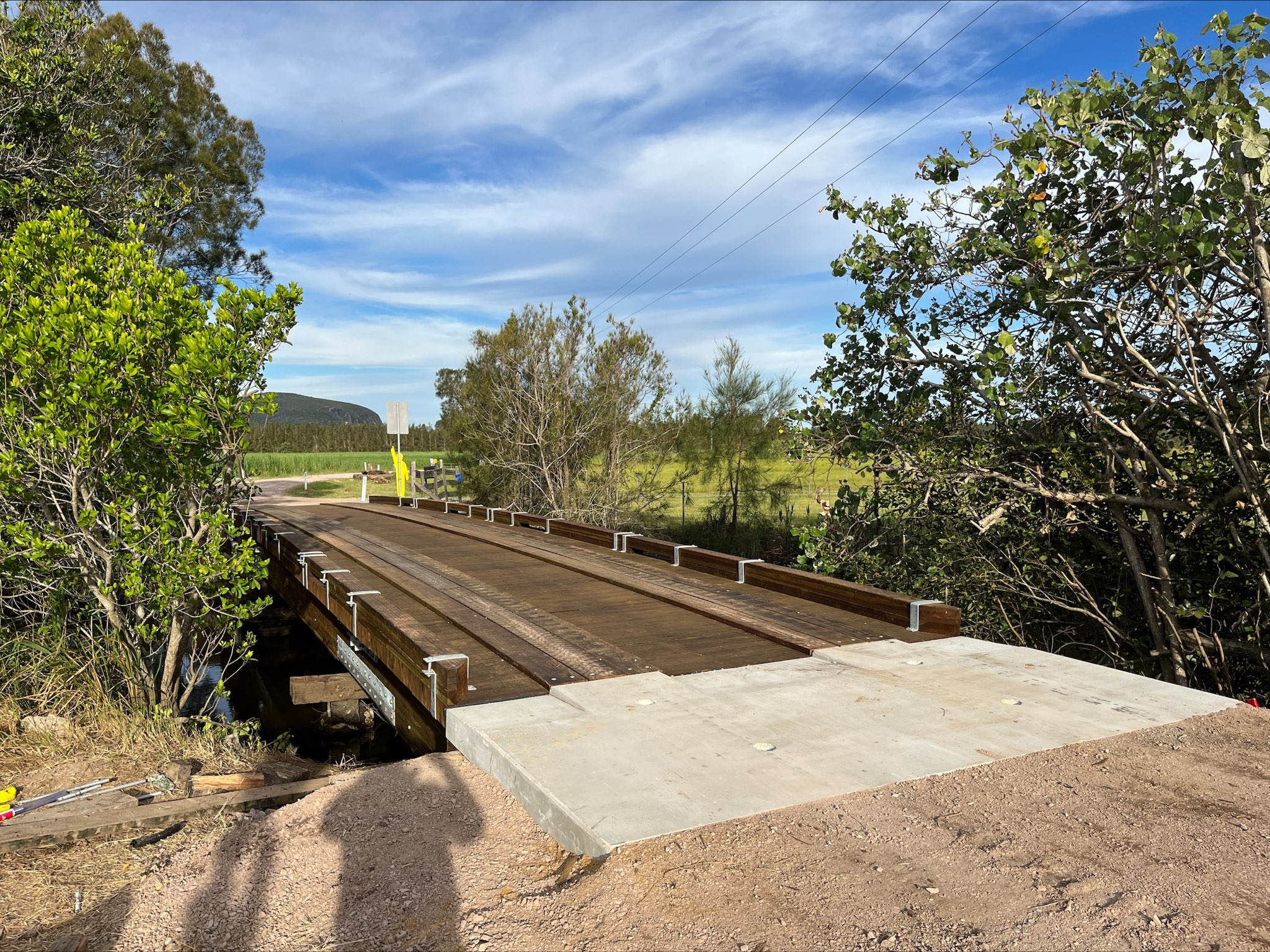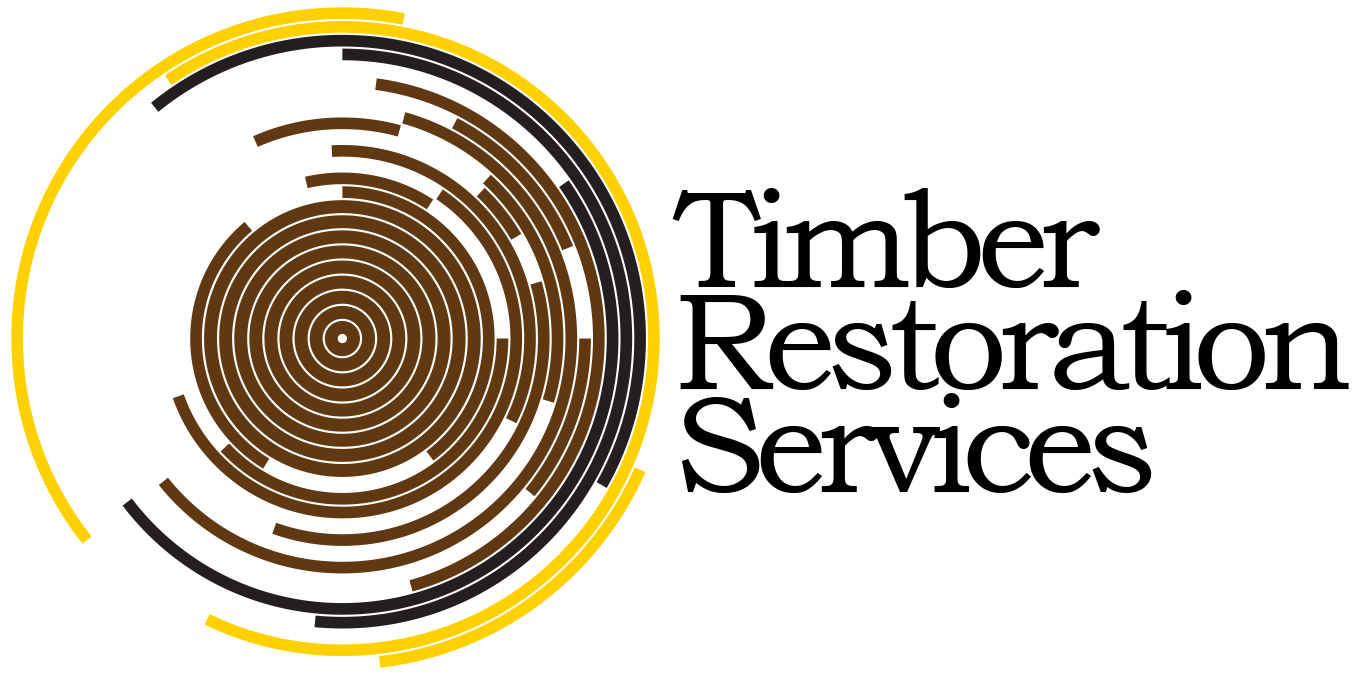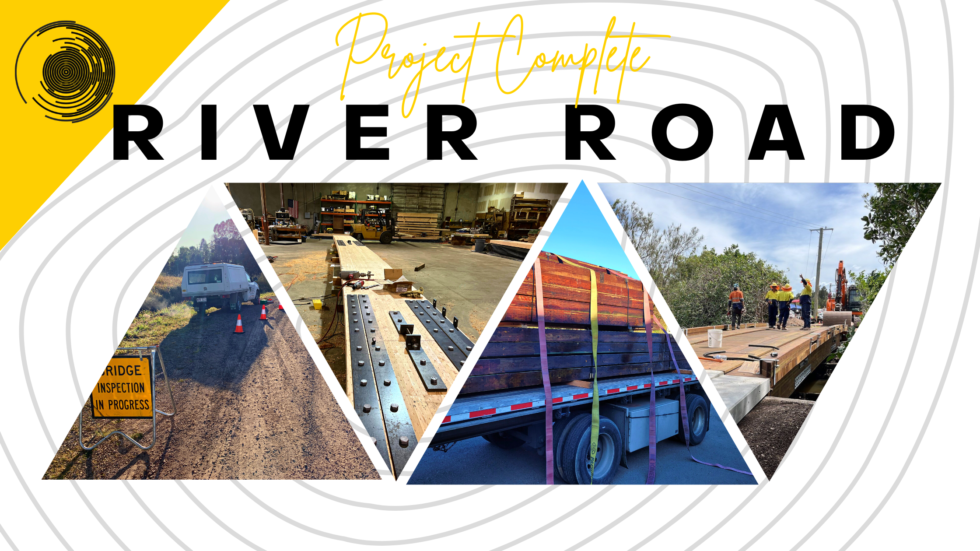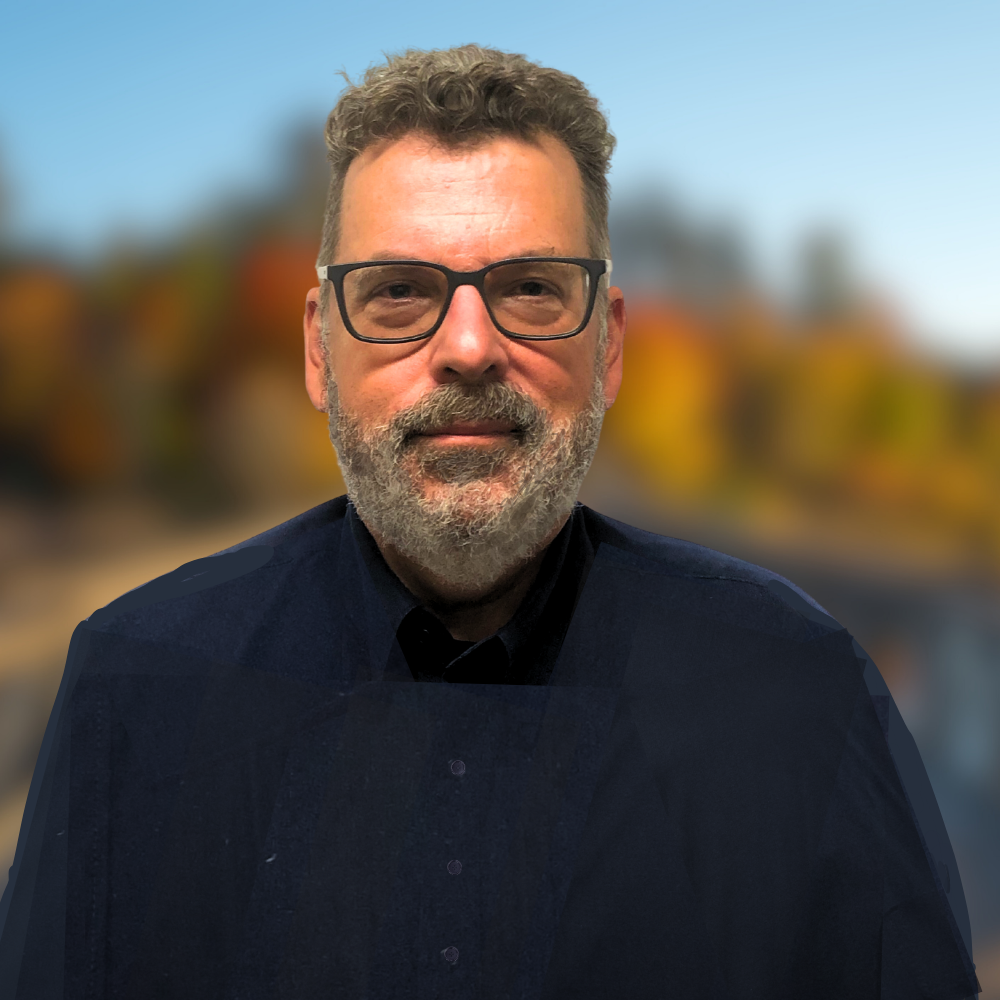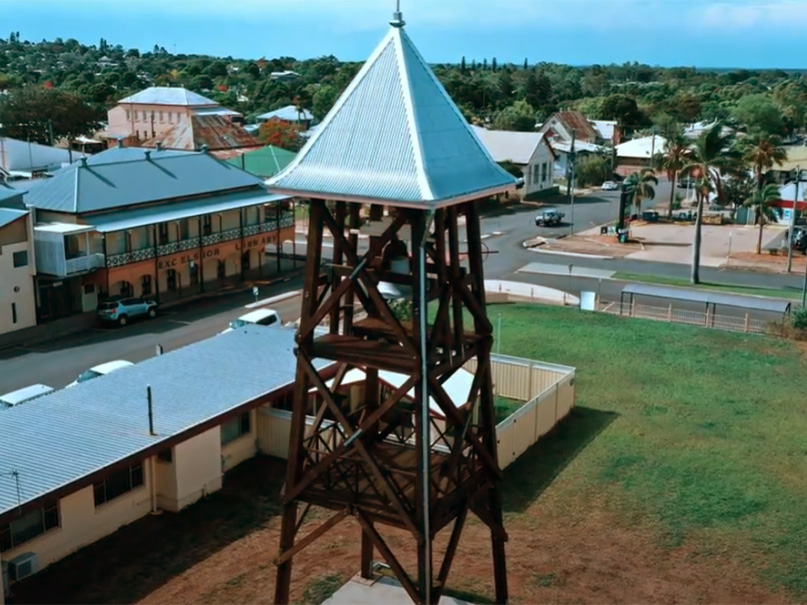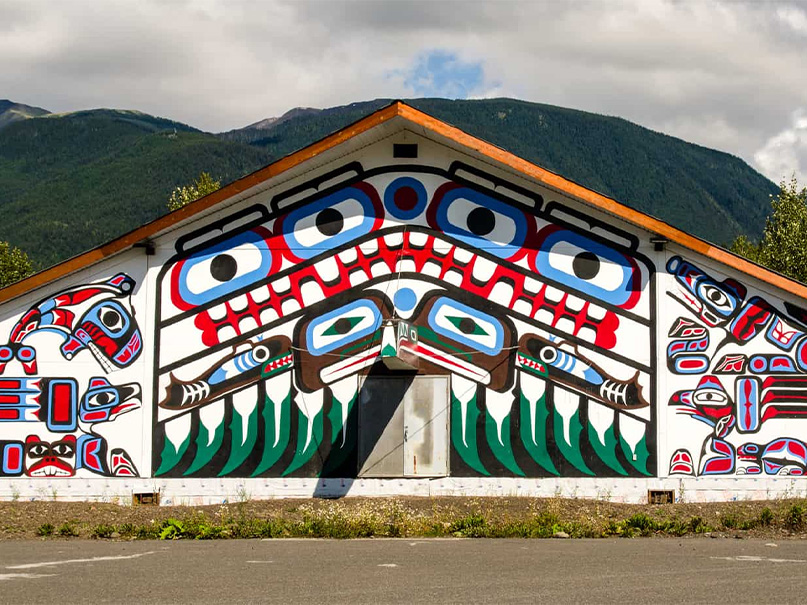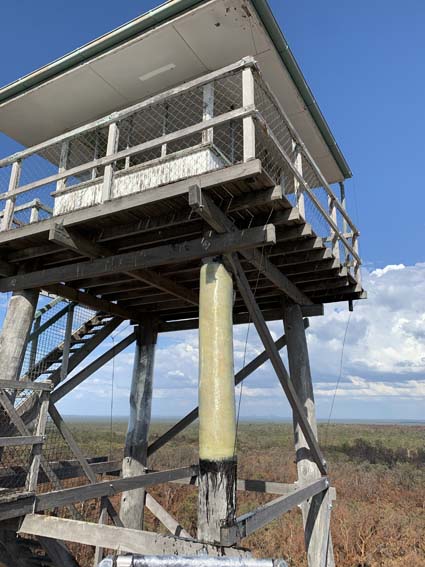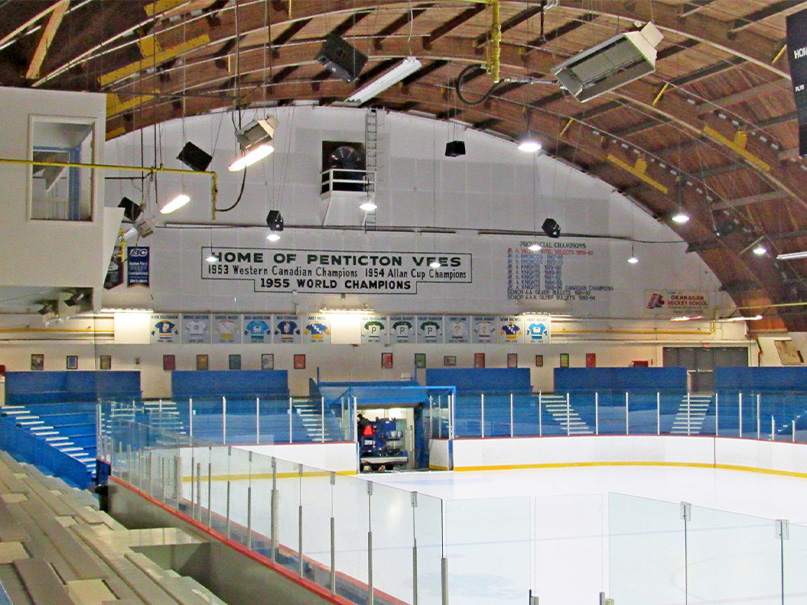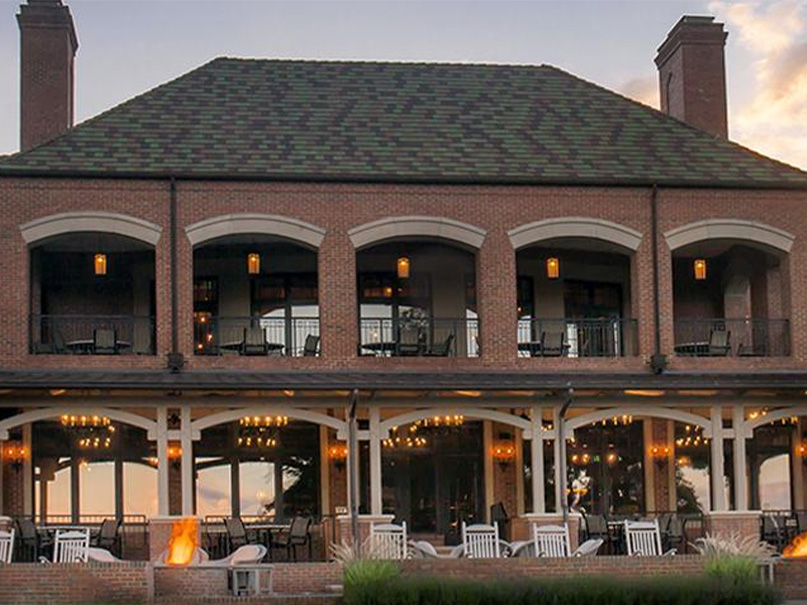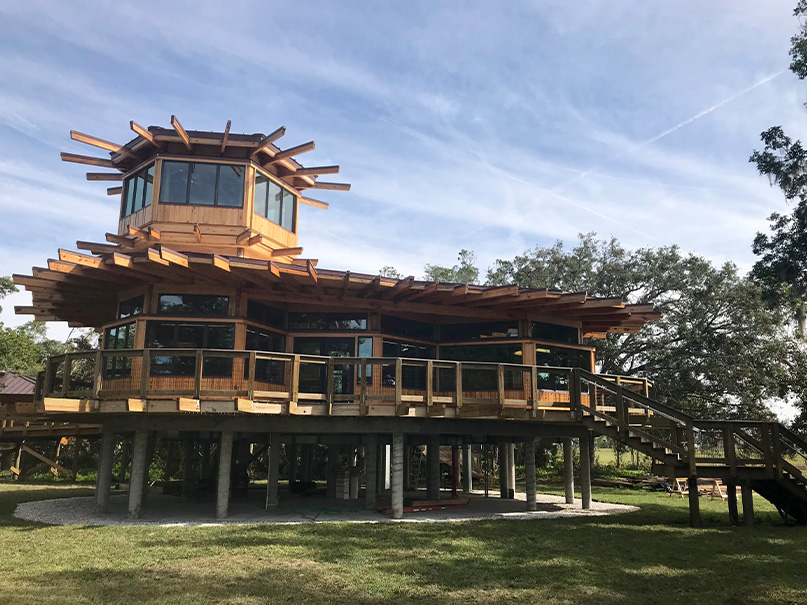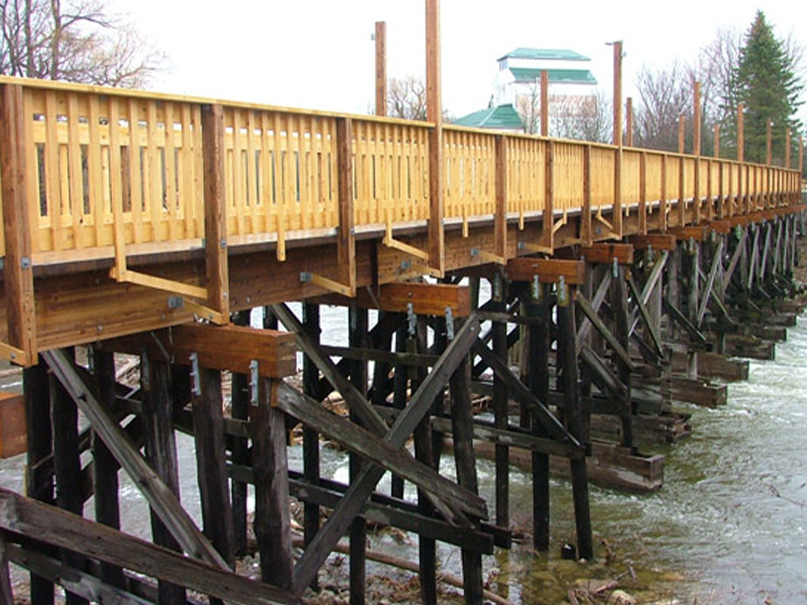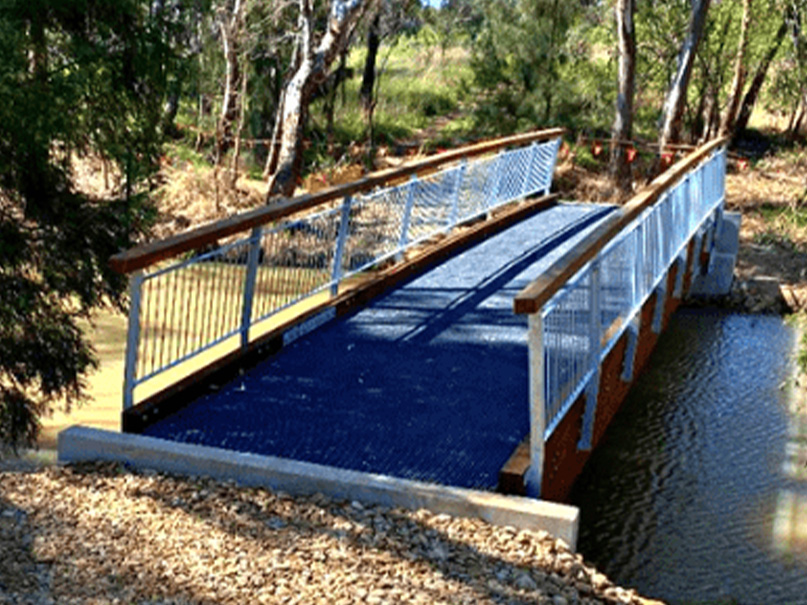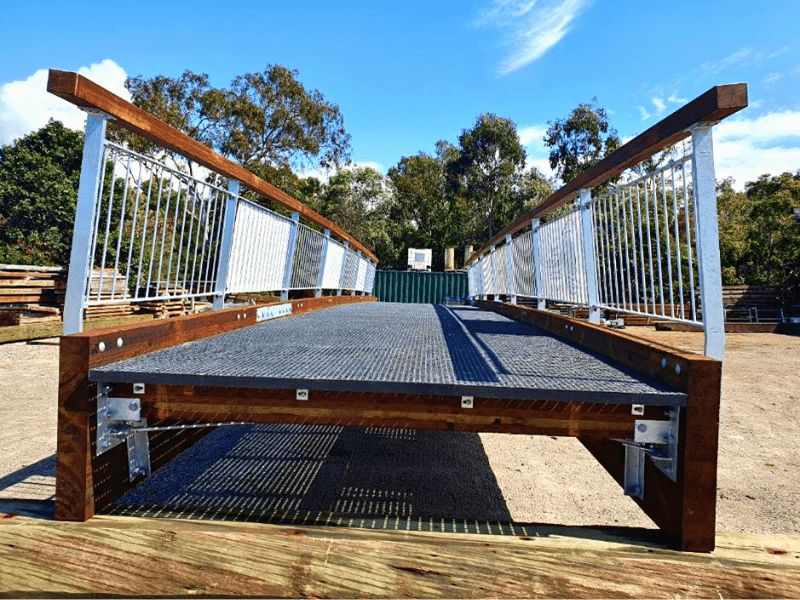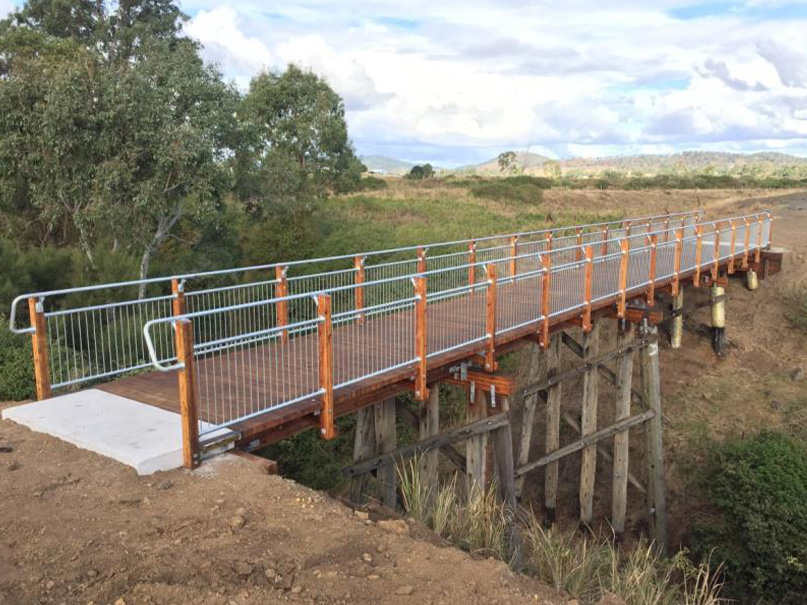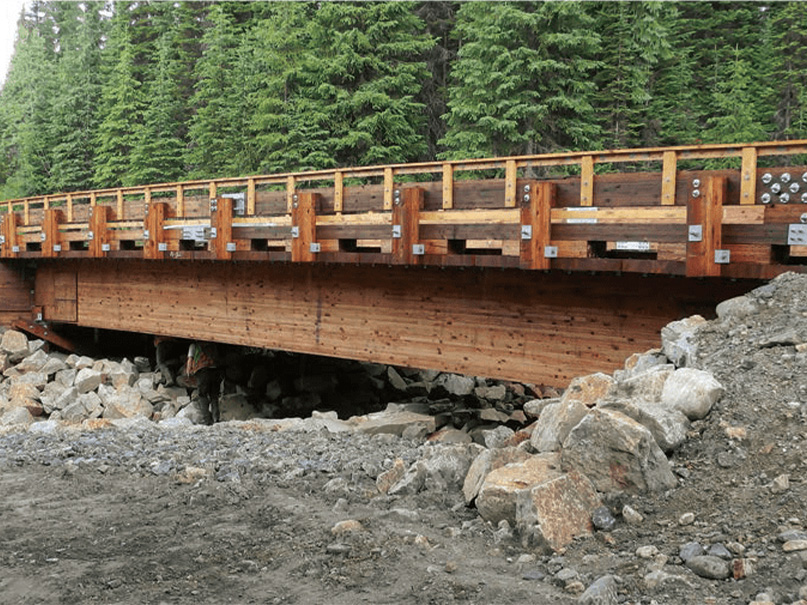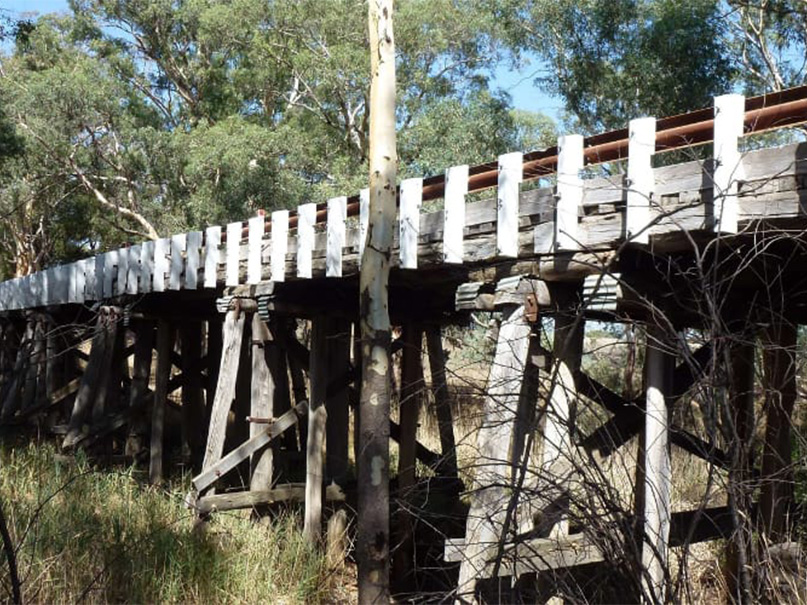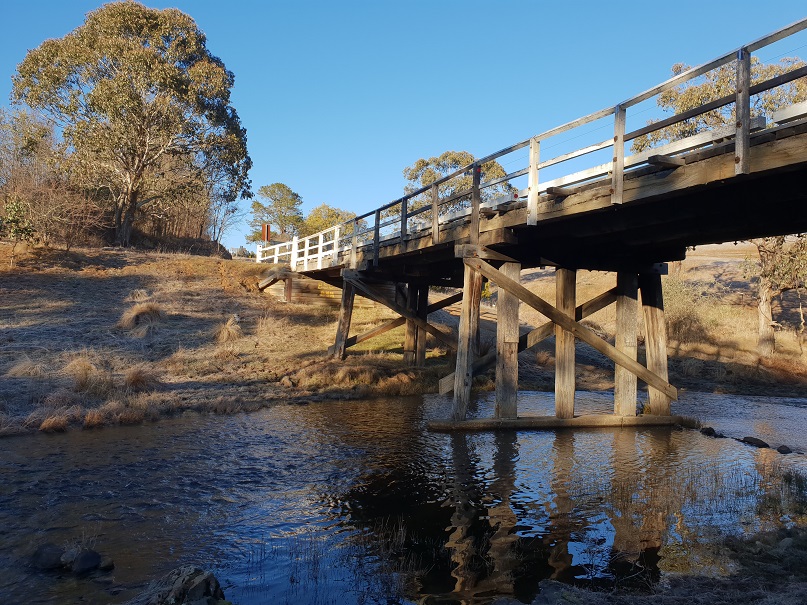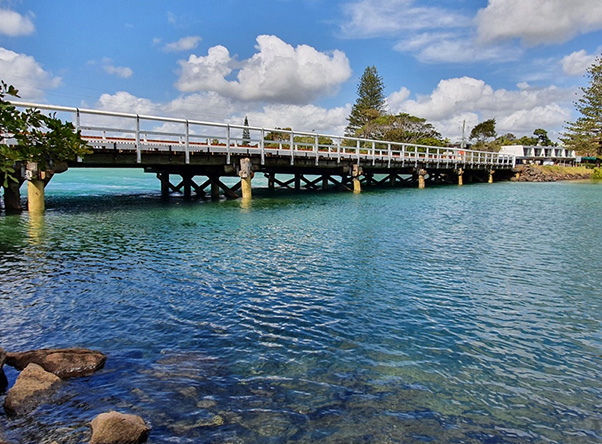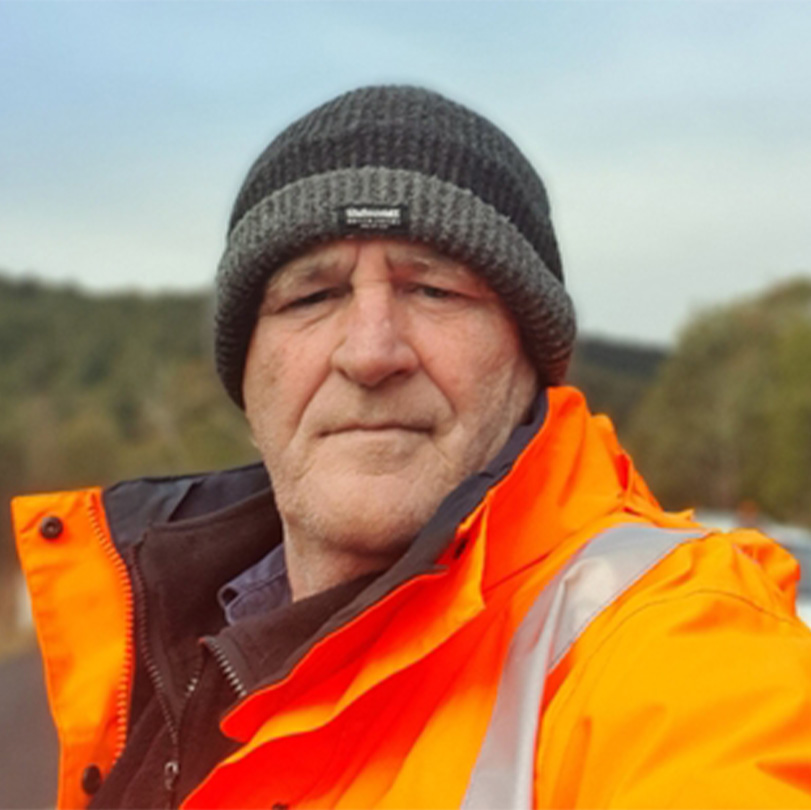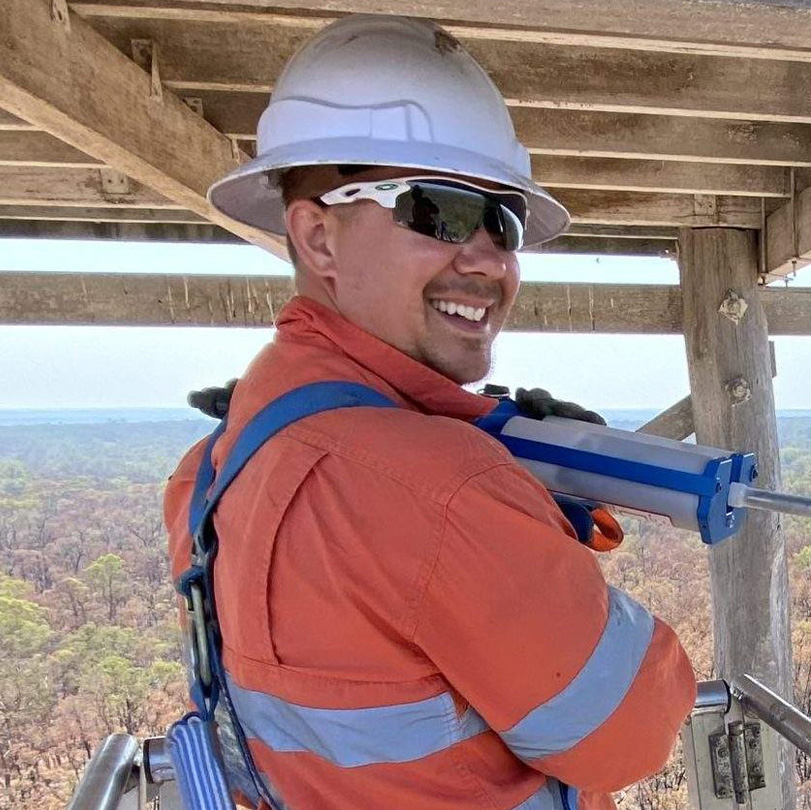Timber Restoration Services (TRS) is happy to announce the wrapping up of the River Road Bridge replacement project. TRS worked very closely with Wood Research and Development (WRD) and the Sunshine Coast Council to put forth a solution that fit the community’s needs along with a design and product that will provide a service life of 100 years, ensuring that it is an iconic piece of the community for generations to come.
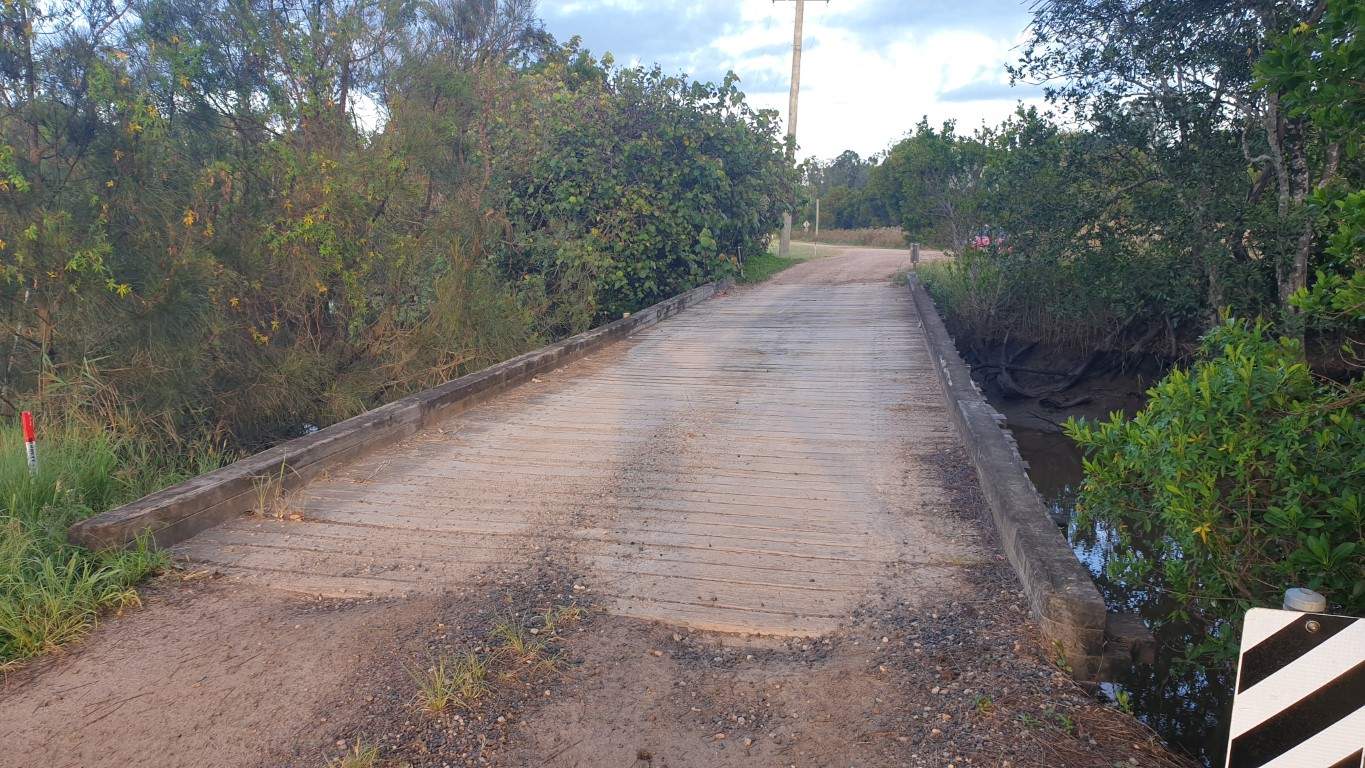
The original River Road bridge structure to be replaced as a part of the Sunshine Coast council project.
History & location of the Bridge
The River Road Bridge is located on Small Creek, which discharges into the Maroochy River
approximately 200 meters south of River Road. The creek has a catchment area of approximately 200 hectares. The catchment area is used for rural purposes (sugar cane), is very flat, and contains several farm drains that discharge towards the creek. The bridge is located within the flood plain north of the Maroochy River in an area known by the same name. The actual date of the original construction of the bridge is unknown, however historical records from the Queensland Heritage Register indicate the tramway line was constructed over the Maroochy River in 1921. The River Road Bridge is located approximately 3km from the Maroochy River crossing. It is expected the bridge was built circa 1921-1922, with the tramway line opening in 1923. In 2003, 80 years later, the tramway tracks were removed and became an unsealed road for locals following the closure of the Sugar Mill.
In 2016, Intrada came up and conducted inspections and assessments of the structure and made the recommendation Council that the bridge is given a condition state rating of 4. Following that assessment Council launched an effort to conduct rehab and restoration works in 2018, attempting to stabilize and level the bridge after it suffered from overloading events, by dump trucks that delivered fill for the construction of platforms above the flood level for farm structures, resulting in the settlement of the pile bents. The work that was executed consisted of the lifting of the superstructure and installing a new sill log above the original headstocks at Abutment 1 and several packers above the original headstocks and corbels
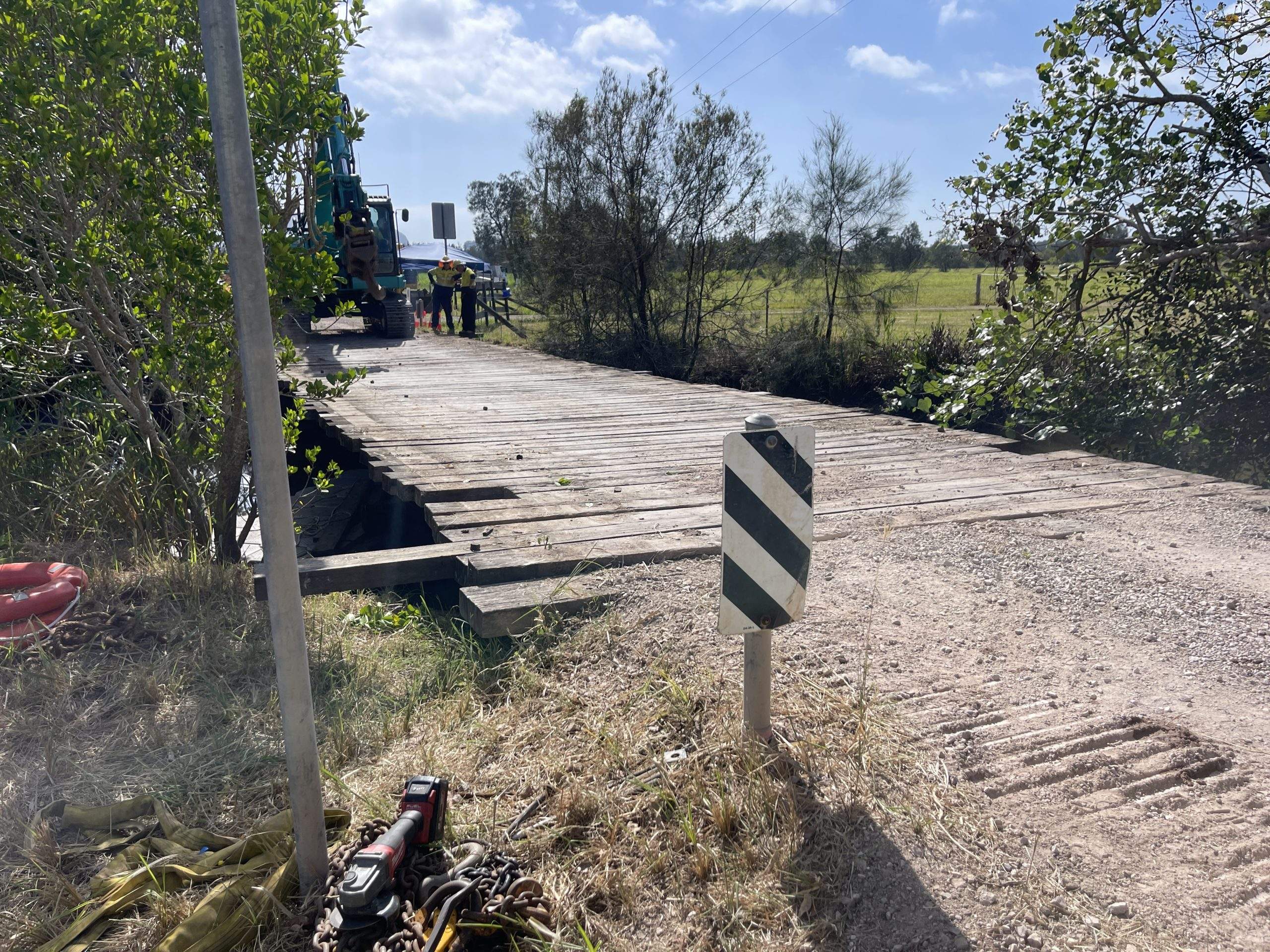
Original River Road bridge before demolition to make way for a treated Glulam beam mass timber structure.
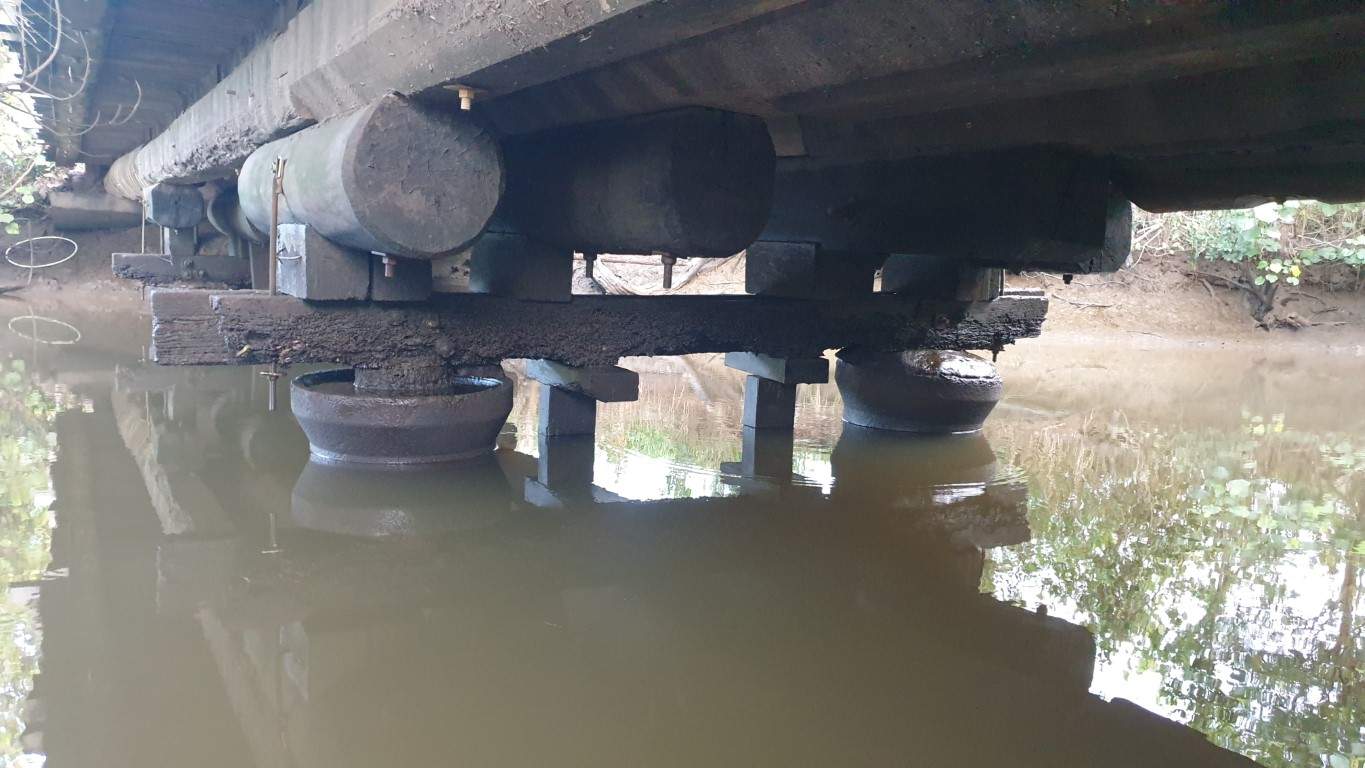
The underside of the piles and bents of the original River Road structure.
TRS & Sunshine Coast begin their journey
Coming to present-day Council awarded Timber Restoration Services (TRS) the contract to restore the bridge for the community and reconnect them to the surrounding areas. TRS’ initially set out to investigate the condition of the existing abutments, demolish the superstructure and pile bents, and install a new single-span superstructure that is designed to be lowered onto the existing abutments. Wood Research and Development (WRD) was commissioned by TRS to inspect the condition of the existing abutments and design a new superstructure should it be found that the existing abutments can support the new superstructure. An inspection by TRS and WRD representatives took place on June 23rd, 2022. This investigation included a visual inspection, non-destructive through compression wave time testing to determine internal decay, and pile depth testing. A geotechnical investigation by Douglas Partners (DP) took place on June 24th, 2022. The goal of this report was to document the findings of our investigations and draw conclusions about the abutment’s condition and load rating (where applicable).
After providing the council with three plans of action to potentially pursue as a part of their tender proposal; the Sunshine Coast Council decided to pursue a new single-span structure that will replace the existing three-span superstructure with reduced road closures to minimize disruption to residents. Additionally, the asset that was going to be provided was Sixteen times more carbon friendly than Reinforced Concrete and 21 times more carbon friendly than steel.
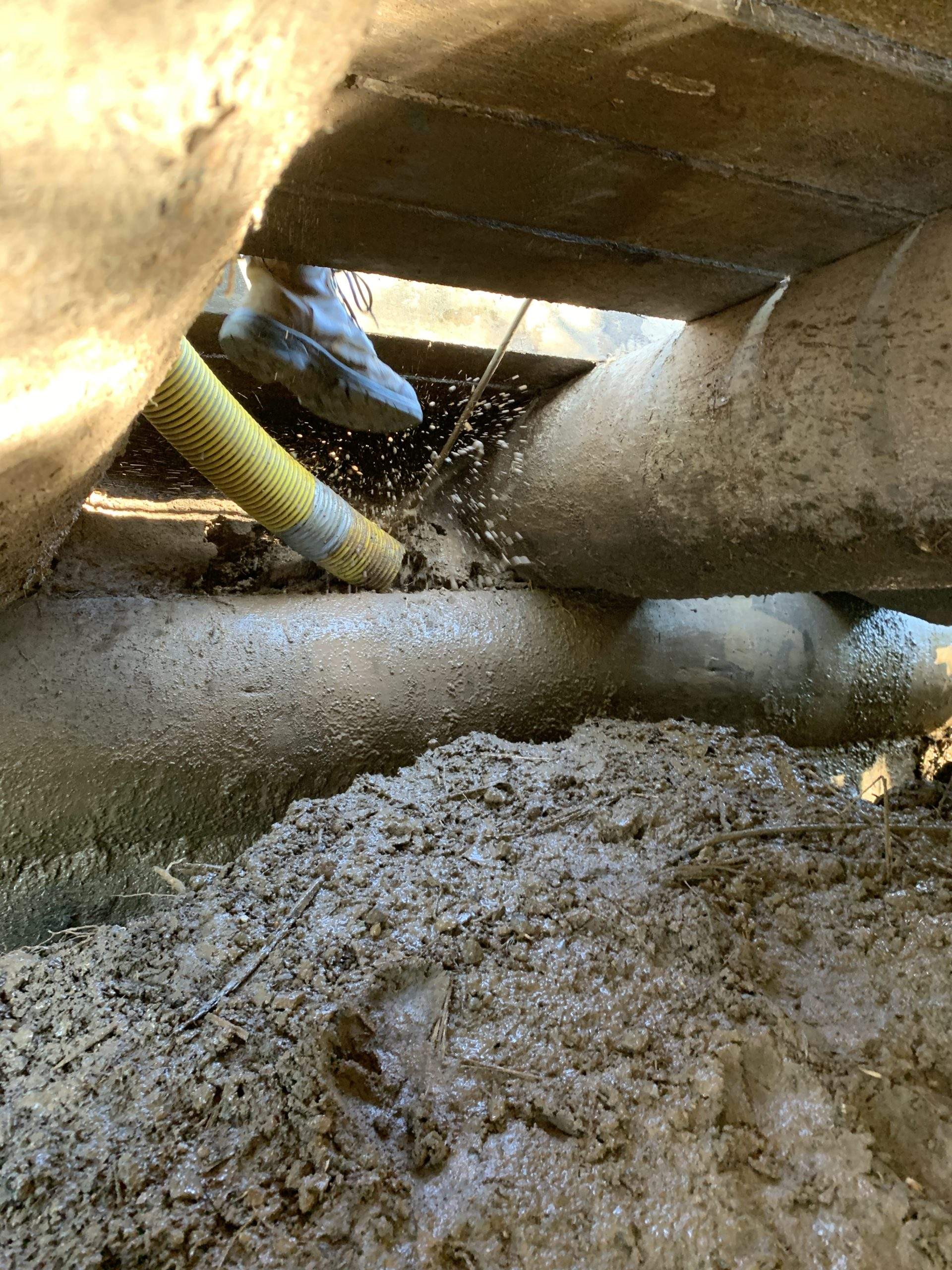
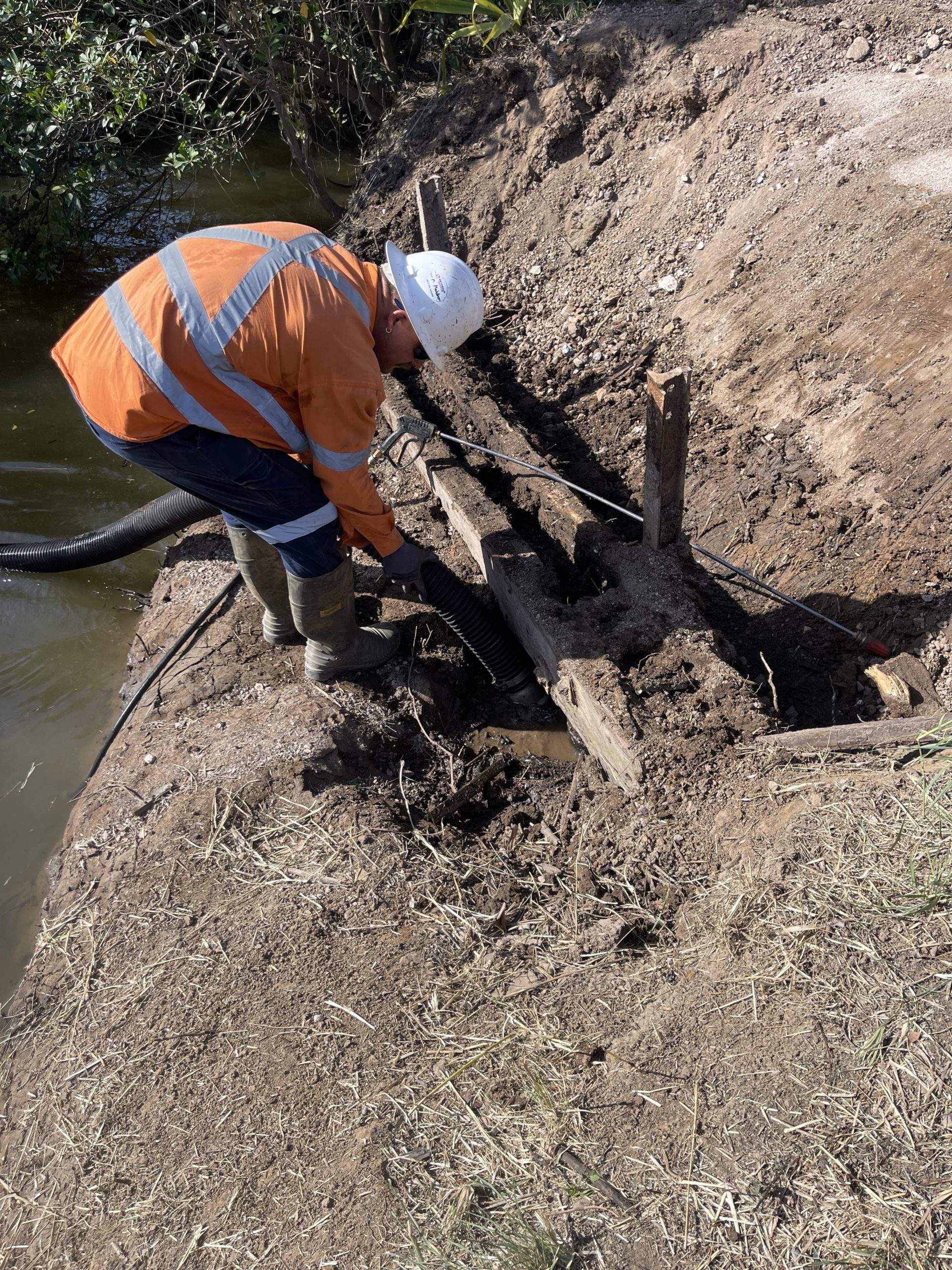
After providing the council with three plans of action to potentially pursue as a part of their tender proposal; the Sunshine Coast Council decided to pursue a new single-span structure that will replace the existing three-span superstructure with reduced road closures to minimize disruption to residents. Additionally, the asset that was going to be provided was Sixteen times more carbon friendly than Reinforced Concrete and 21 times more carbon friendly than steel.
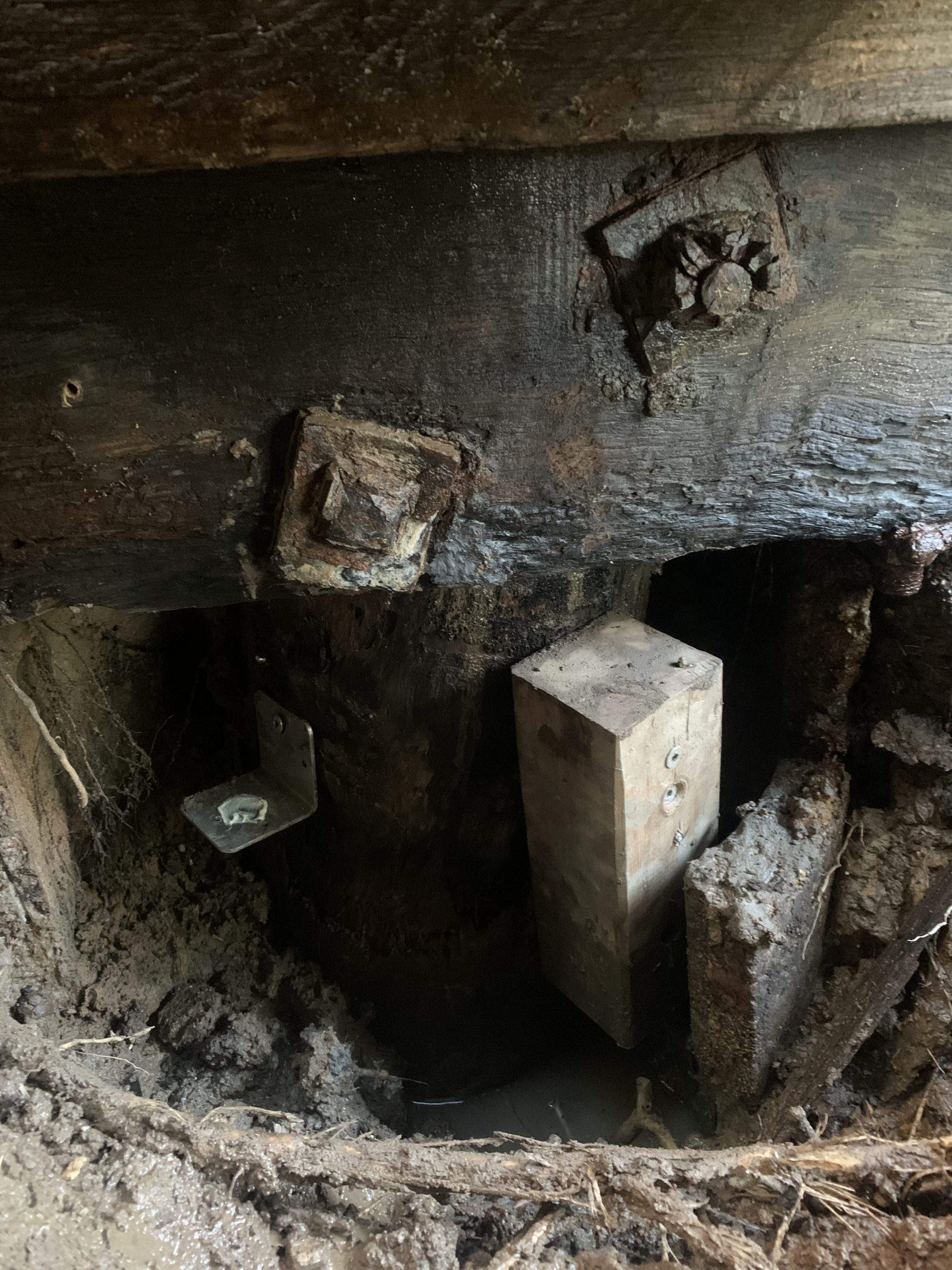
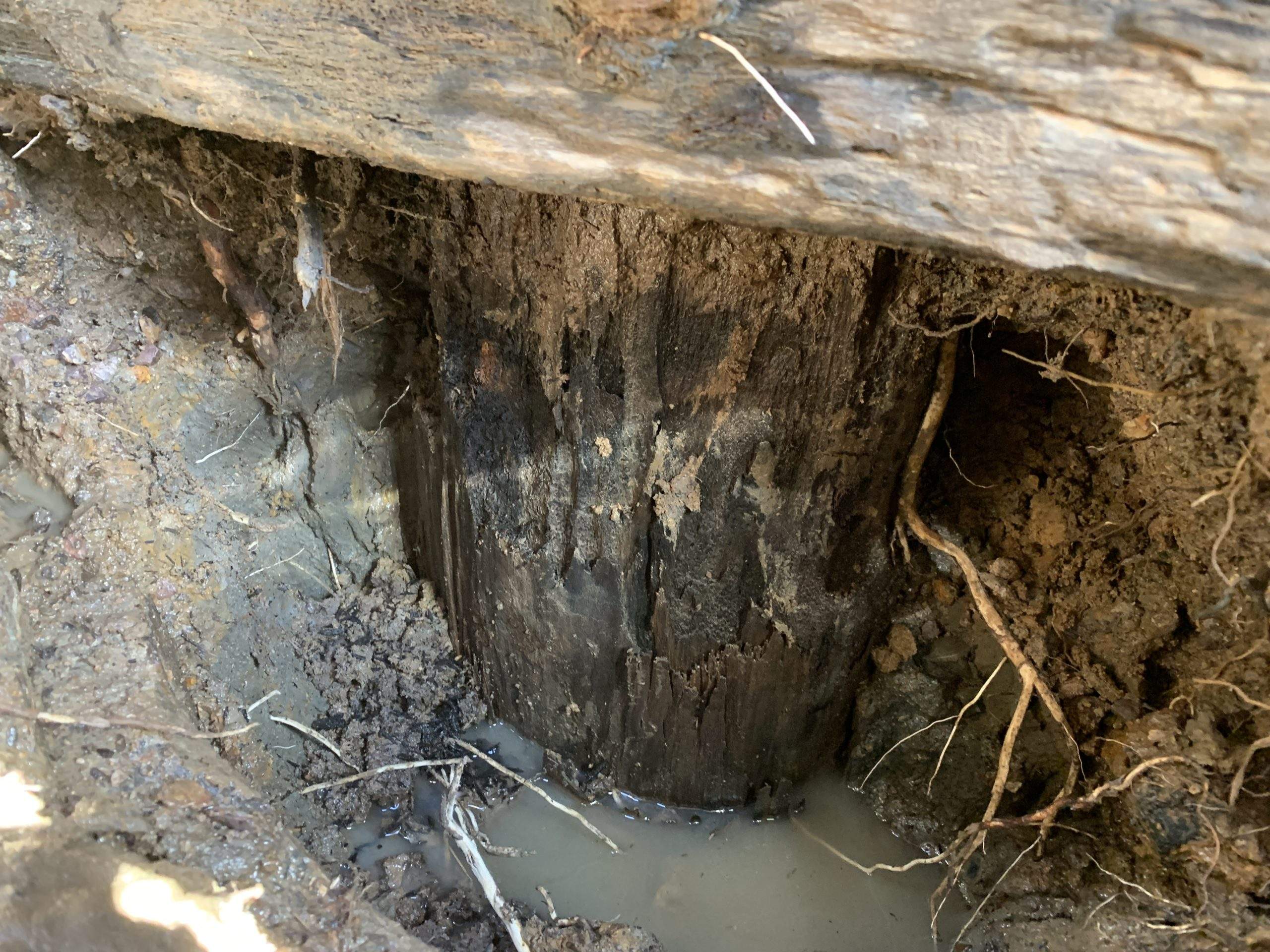
Bridging the Gap
Timber Restoration Services put forward three different design proposals all clear span options for the project as a part of their tender proposal and the design that was selected was a 20-meter Clear Span design constructed out of exterior grade glue-laminated (glulam) timbers rated for 25 tonnes and provided the council a bridge asset with a service life of 100 years. Once awarded and with the Sunshine Coast Council on board, TRS was ready to begin the project with the foundational and investigatory work.
The required investigatory work included testing up to 24 meters in depth at two locations at each abutment to ensure that the abutments could be salvaged and used in the awarded design option with the new superstructure.TRS also recommended to the council that the existing timber piles be incorporated into the design rather than constructing piles with all new materials due to their superior ability to withstand lateral loads through flood events.
Once demolition of the existing superstructure and headstocks, the methodology plan for the project called for the trimming and removal of decayed wood from the timber piles to just under the surface level of soil approximately 600 mm. This depth allowed TRS to salvage the maximum amount of the piles because at that depth is where Brightwood would be found due to the lack of oxygen preventing decay under the surface. TRS removed the concrete jackets and typically the piles would be wrapped with high-strength reinforcement fiber to protect from marine borers like shipworms, or Limnoriids, but for this project, it wasn’t needed. The screw pile connections were also epoxied with a proprietary product Timber Restoration Services developed to protect the steel screw piles from acid sulfate soils (ASS).
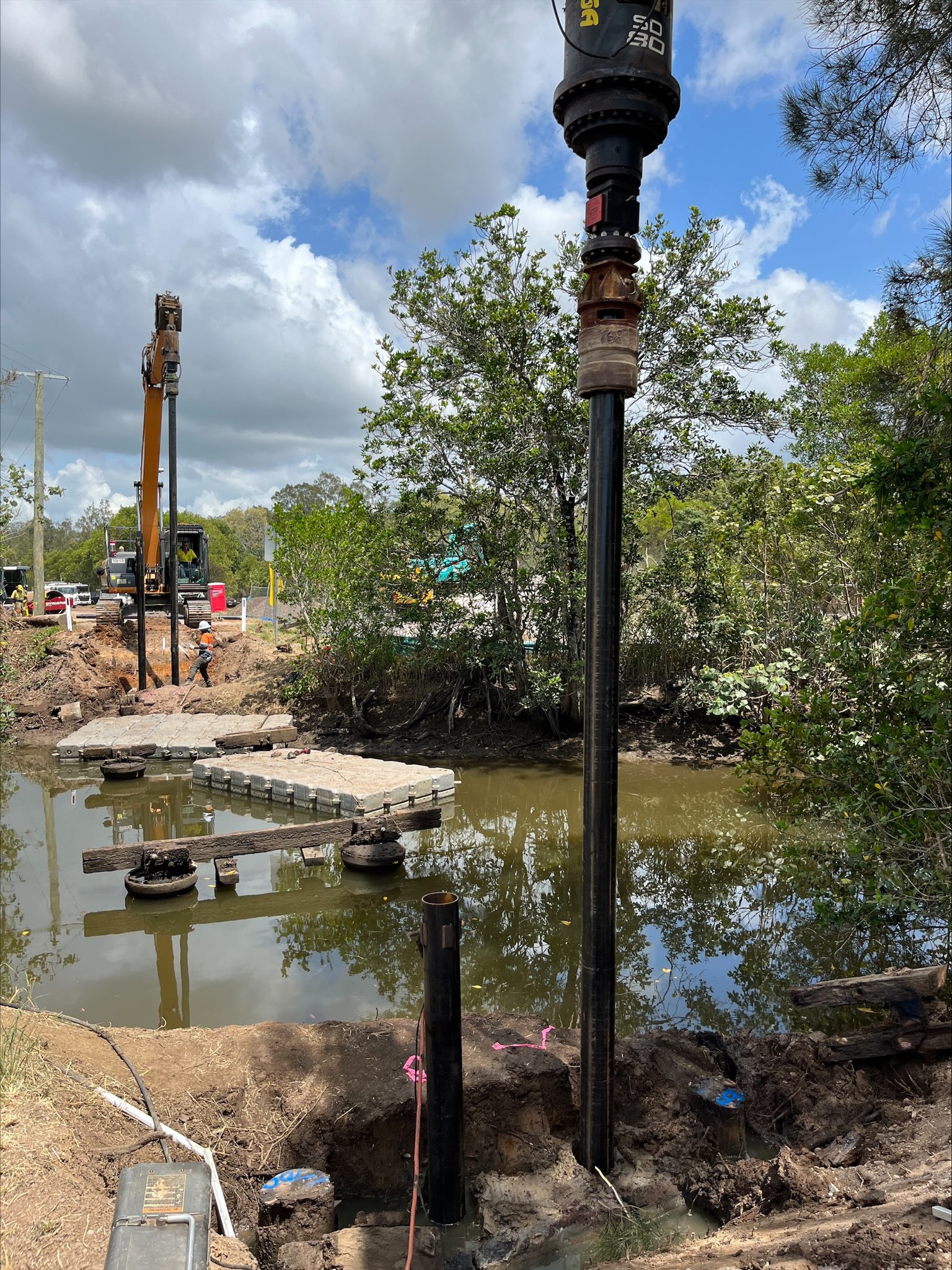
Building a Long Term Solution in a short amount of time
Once the bridge had been delivered from the treatment facility and shipped to Queensland via freight container, the TRS team began assembling the prefabricated and pre-treated structure at our facility according to specifications and design plans that were delivered from WRD before being delivered to the job site. During this time the crew was completing the site preparation demolition and removal of the site and getting it prepared for the new superstructure that was going to be delivered.
The crew spent a total of 16 days on-site preparing the job site and completing prep and restoration work on the timber piles and abutments, ensuring they were ready to receive the new superstructure and demolition and removal of the existing structure. Once the stage was set and with a lift from Borger Cranes TRS was able to install the bridge and approach in 1 day and have it ready for use for truck traffic and the community.
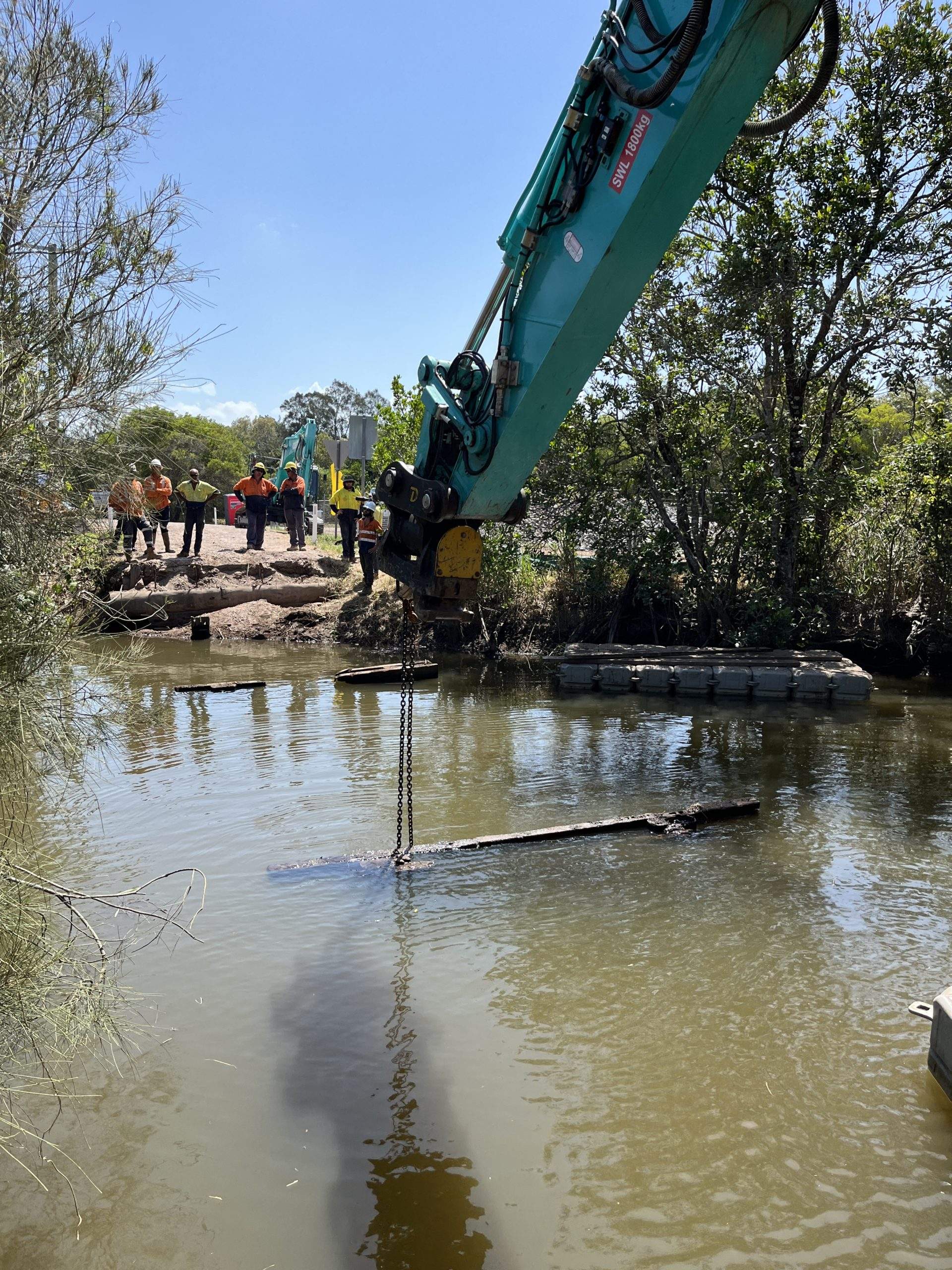
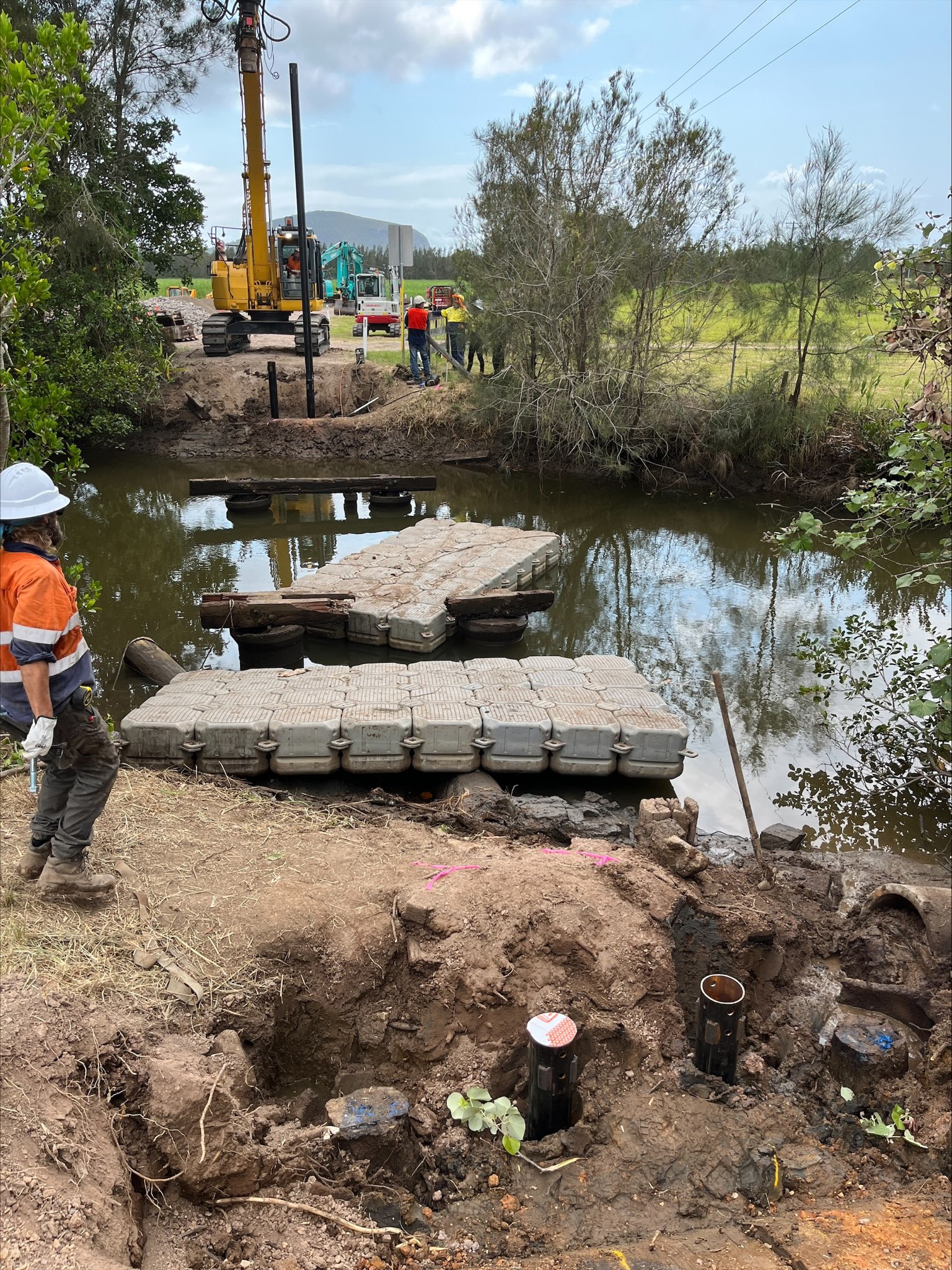
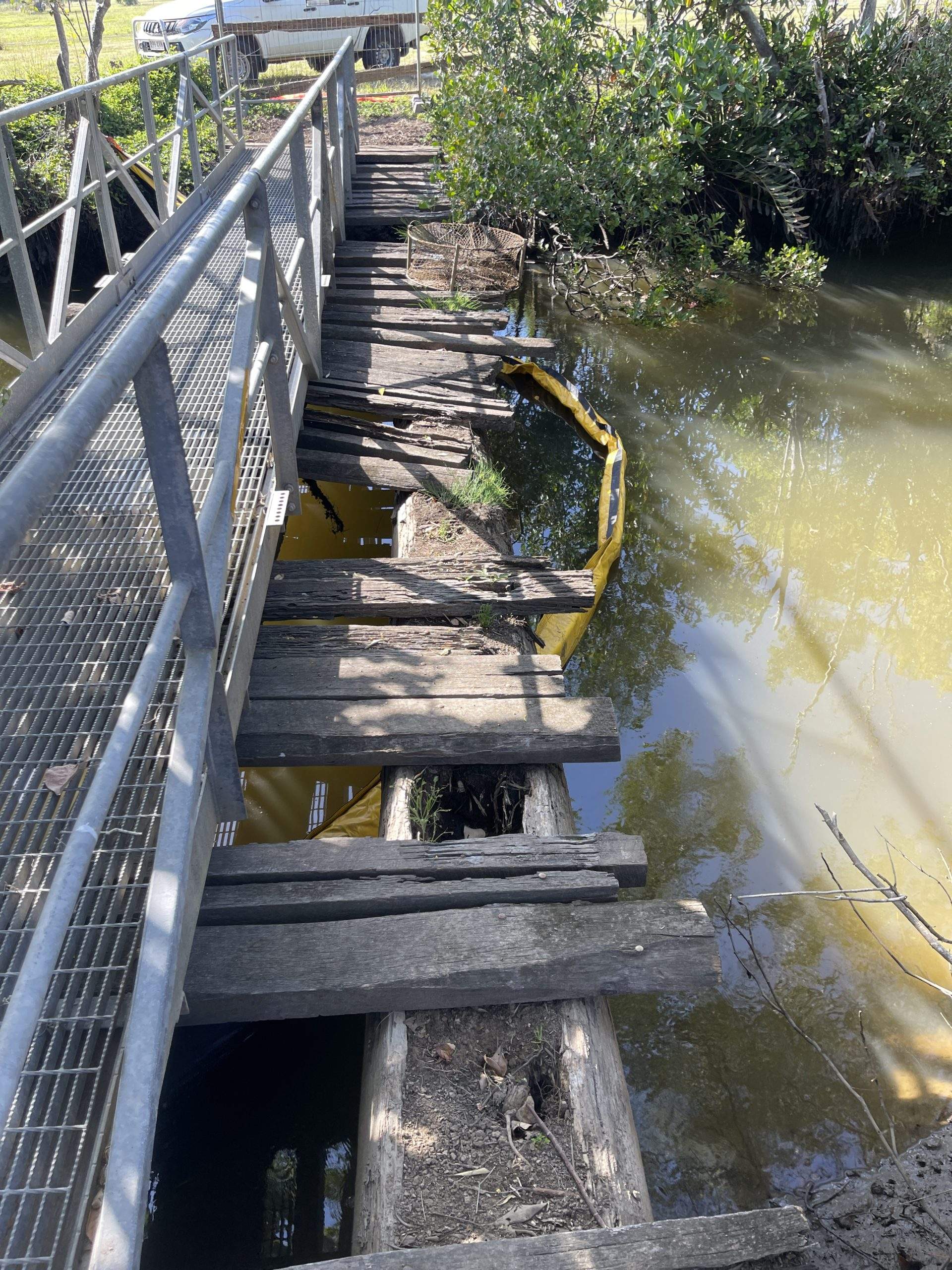
Connecting the Community
Following the delivery of the asset to the Council they were thrilled with the product and turnout from the works completed and TRS is happy to share their feedback.
SCC Project Manager: Thanks for submitting the final claim for River Rd, was a great project to be a part of, and appreciate you & your team’s efforts throughout design, procurement, and construction. Couldn’t fault any part of the process which ultimately lead to the successful completion and an outstanding outcome for the community.
SCC Environmental Officers: Loved the concept of prefabrication and lifting fully assembled bridges into position with minimal to no disturbance to the surrounding environment. We hope this concept is adopted in the SCC bridge replacement program and it’s great to see timber bridges rather than concrete!
SCC Safety Officer: It was a pleasure to audit the site and see a plan implemented upon arrival. One of the better sites I’ve attended whilst with the Council. Excellent pre-start meetings and toolbox talks, especially during high-risk activities such as demolition and bridge lifts.
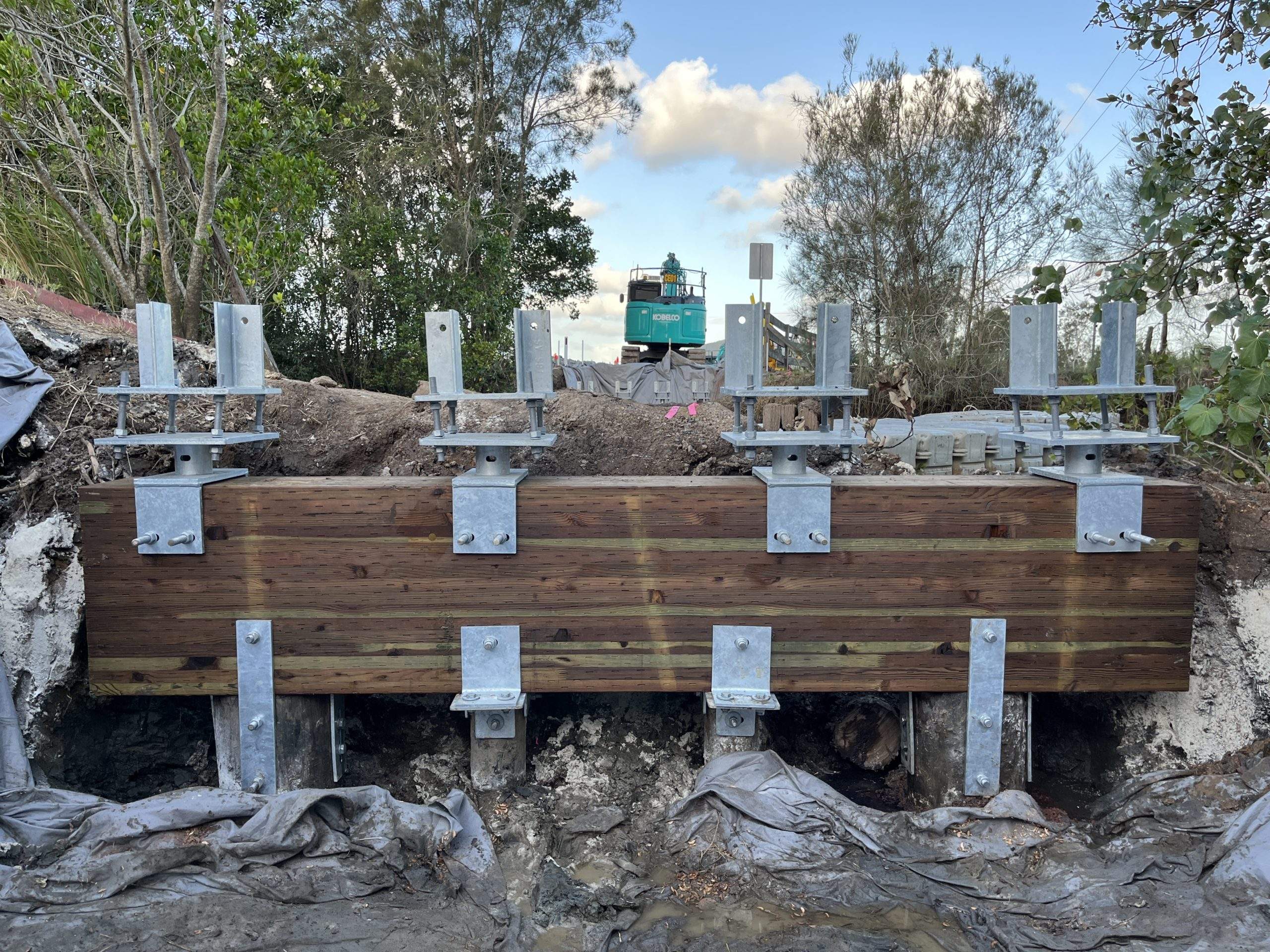


Conclusion
In conclusion, the Sunshine Coast Council was able to quickly and cost-effectively upgrade its old bridge structure with a new glulam timber bridge that met all of its needs while also being friendly to the environment. Thanks to Timber Restoration Services’ expertise in glue-laminated timbers and their knowledge of timber protection solutions, they were able to create a bridge with a service life of 100 years. The Sunshine Coast Council was thrilled with the outcome and their new bridge that seamlessly connects the community. TRS had a way of finding solutions to bridge this gap between the old and new, providing a long-term solution on time and within budget. This project served as an example of what can be accomplished when a community and industry can come together to solve problems. TRS is proud of the work it did for the Sunshine Coast Council and will continue to strive to guide communities to eco-friendly and cost-effective solutions for their infrastructure needs.
